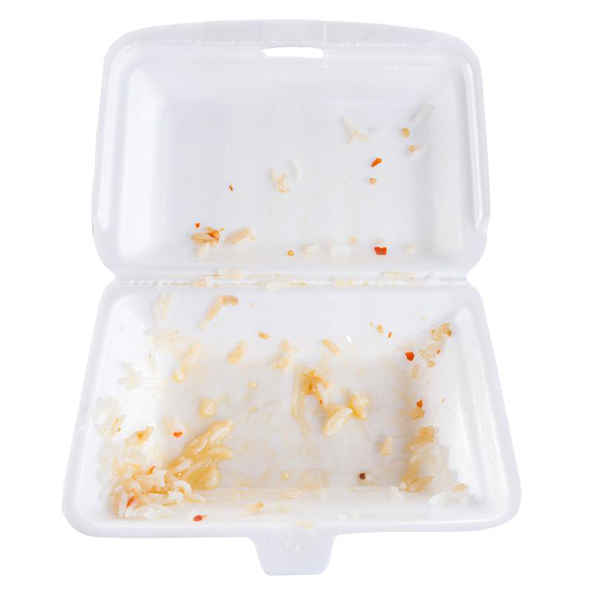What Contaminates a Load of Mixed Recycling?
Last month we focused on how plastic bags, sheets, packing pillows, and other items can mess up the sophisticated machinery where our loads of co-mingled recycling are processed. This month we’ll explain how an entire load of recycling can go from being recyclable, to heading straight to the landfill.
One of the most common contaminants in a load of recyclables is food waste. A full turkey carcass wrapped in aluminum foil (this just happened in August) can cause an entire load to have no value for recycling. But we are also talking about more subtle ways to contaminate a load.
While we don’t see many styrofoam clamshells on Orcas (thank goodness), they are not recyclable by our processor–even if they are clean inside. More likely we’ll see cardboard or hard paper takeout food containers. The problem is the remnants of food in them. This is true with bottles and cans of food that have not been washed out. The processors can deal with some small amounts of food waste, but containers need to be as clean as possible. And contrary to what you may read about cardboard pizza boxes being recyclable, our processor does not want them in separated cardboard or mixed recycling. If the lid is soiled or has cheese stuck on it, rip it off and put the lid in trash, and then recycle the clean bottom.
Recycling takes some effort to get right – if you have questions, talk to one of our docents when you are ready to drop your items in the bin. Better yet, become one of our docents so you can help provide education to others. Many of our visitors to Orcas are unfamiliar with our processes, and some friendly interaction goes a long way to improve the outcome. Call Duff at 360-376-3032 if you want more information about becoming a docent.

